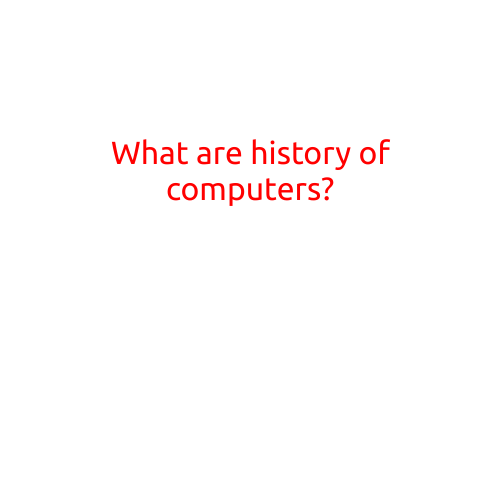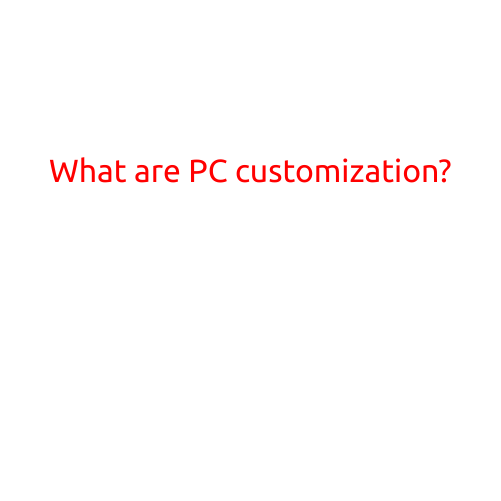
What is the History of Computers?
Computers have revolutionized the way we live, work, and communicate. From humble beginnings to the sophisticated machines we use today, the history of computers is a fascinating story of innovation, perseverance, and collaboration. In this article, we’ll take a journey through the evolution of computers, exploring the key milestones, pioneers, and technological advancements that have shaped the industry.
Early Origins
The concept of computers dates back to ancient civilizations, where mathematicians and astronomers used abacuses, astrolabes, and mechanical devices to perform calculations and record data. However, the modern computer as we know it today began to take shape in the 19th century.
In 1822, Charles Babbage, an English mathematician, designed the Difference Engine, an mechanical calculator that could perform arithmetic operations. Although it was never built during his lifetime, Babbage’s concept laid the foundation for modern computer design.
The First Computers
The first electronic computers emerged in the mid-20th century, with the development of the Electronic Numerical Integrator and Computer (ENIAC) in the 1940s. ENIAC was a room-sized machine built by John Mauchly and J. Presper Eckert at the University of Pennsylvania. It used vacuum tubes to perform calculations and was used for military and scientific applications.
In the 1950s, the first commercial computers were introduced, with the launch of the UNIVAC I in 1951. This machine used magnetic tapes for storage and was designed for business applications. The development of transistors in the 1950s replaced vacuum tubes, making computers smaller, faster, and more reliable.
The Microcomputer Era
The introduction of the microprocessor in the 1970s revolutionized the computer industry. Microprocessors, such as the Intel 4004, combined all the components of a computer’s central processing unit (CPU) onto a single chip. This led to the development of personal computers, which became accessible to individuals and households.
In 1975, the Altair 8800, a kit computer, was released and became the first commercially successful personal computer. The Apple I, designed by Steve Wozniak and Steve Jobs, followed in 1976 and was one of the first personal computers to gain widespread popularity.
The PC Era
The IBM PC, released in 1981, became the industry standard for personal computers. Its success was driven by Microsoft’s BASIC programming language and the Microsoft Disk Operating System (MS-DOS). The IBM PC was followed by the development of the Apple Macintosh in 1984, which introduced a graphical user interface (GUI) and mouse navigation.
The 1990s saw the rise of the internet and the development of graphical browsers like Netscape and Internet Explorer. The introduction of mobile devices like smartphones and tablets in the 2000s transformed the way we interact with computers and access information.
Modern Computing
Today, computers are ubiquitous and play a central role in our daily lives. We use them for work, entertainment, and communication, and they continue to evolve with advancements in artificial intelligence, cloud computing, and the Internet of Things (IoT).
Some of the current trends and developments in the computer industry include:
- Quantum computing: a new generation of computers that use quantum-mechanical phenomena to perform calculations and operations.
- Cloud computing: the practice of using remote servers to store and process data over the internet.
- Artificial intelligence: the development of intelligent machines that can think, learn, and solve problems like humans.
- Virtual and augmented reality: immersive technologies that simulate or enhance real-world experiences.
Conclusion
The history of computers is a rich and fascinating story of innovation, experimentation, and collaboration. From the early abacuses to the modern supercomputers, the journey has been marked by significant milestones, pioneers, and technological advancements. As we move forward, we can expect computers to continue evolving, becoming more powerful, more portable, and more integrated into our lives.
Whether you’re a seasoned IT professional or a curious individual, understanding the history of computers is essential for appreciating the technology we use today and shaping the future of computing.





